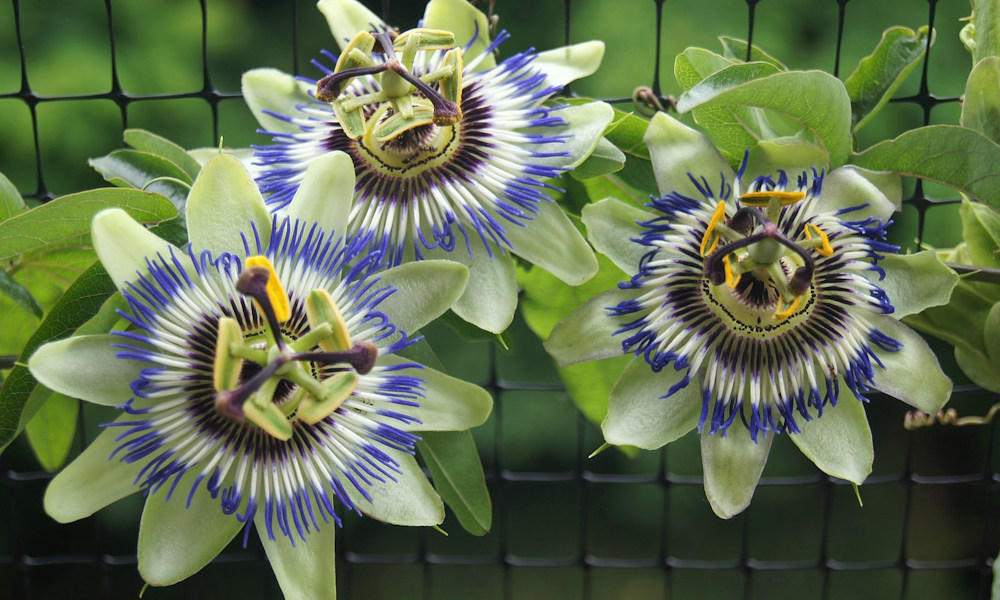Passionflower is a beautiful and unique plant that can add a touch of exoticism to any garden. With its striking flowers and edible fruit, it’s no wonder that more and more gardeners are discovering the joys of growing this fascinating vine.
Passionflower (Passiflora) is a popular ornamental garden plant that belongs to the Passifloraceae family. It is native to the tropical and subtropical regions of the Americas, including South America, Central America and the southern United States. There are over 500 species of passionflower, many of which are cultivated for their showy flowers and edible fruits.
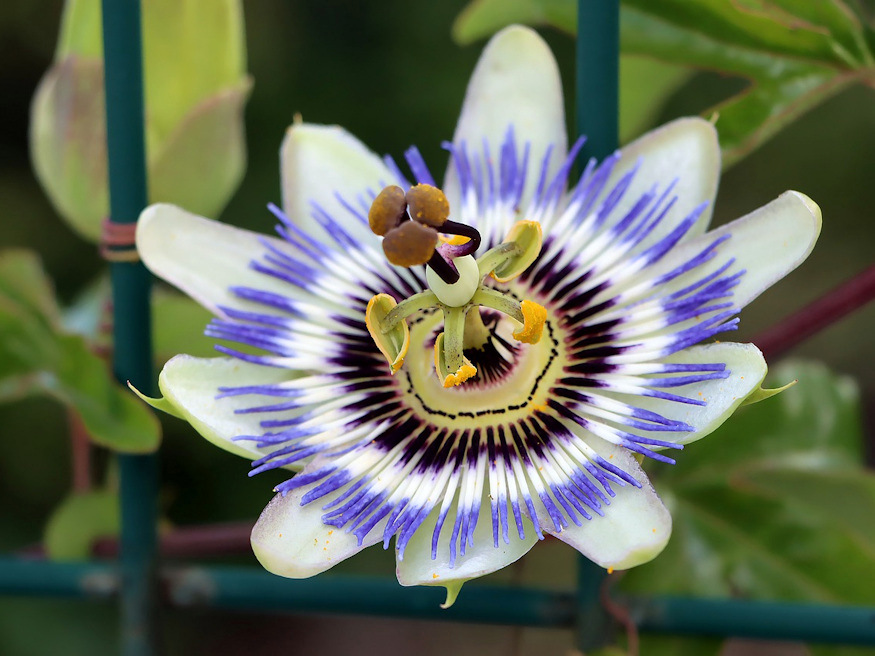
Description
Leaves
Passionflower has palmately-lobed leaves with jagged edges that are arranged alternately on the stem. They are usually 3-10 cm long and have a glossy, dark green color.
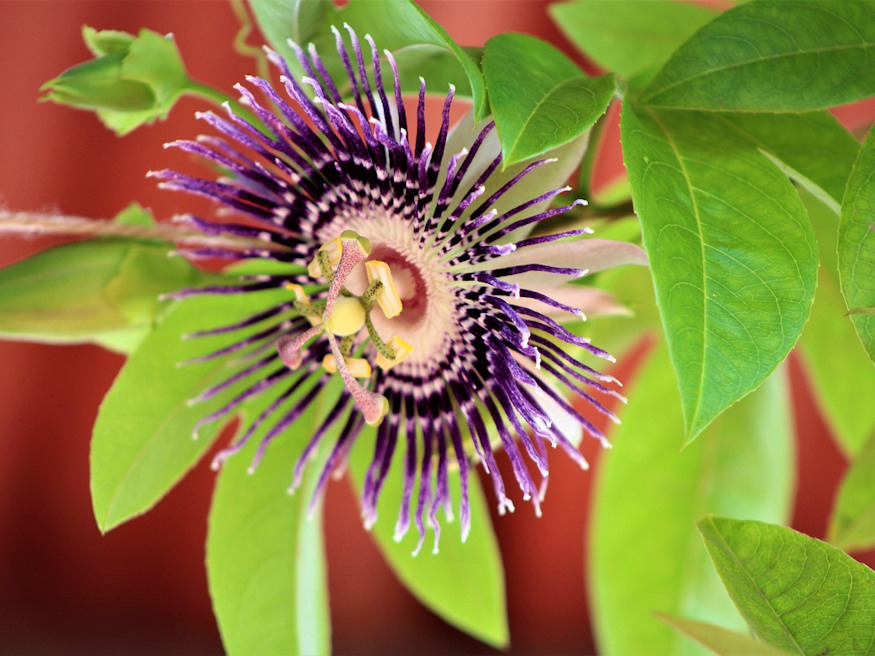
Flowers
The flowers of passionflower are very distinctive and eye-catching. They are usually 5-10 cm wide and have a unique structure consisting of five sepals and five petals, with a central column of filaments and anthers. The flowers are typically white or pink, with purple, blue or red coronal filaments that give the plant its distinctive look.
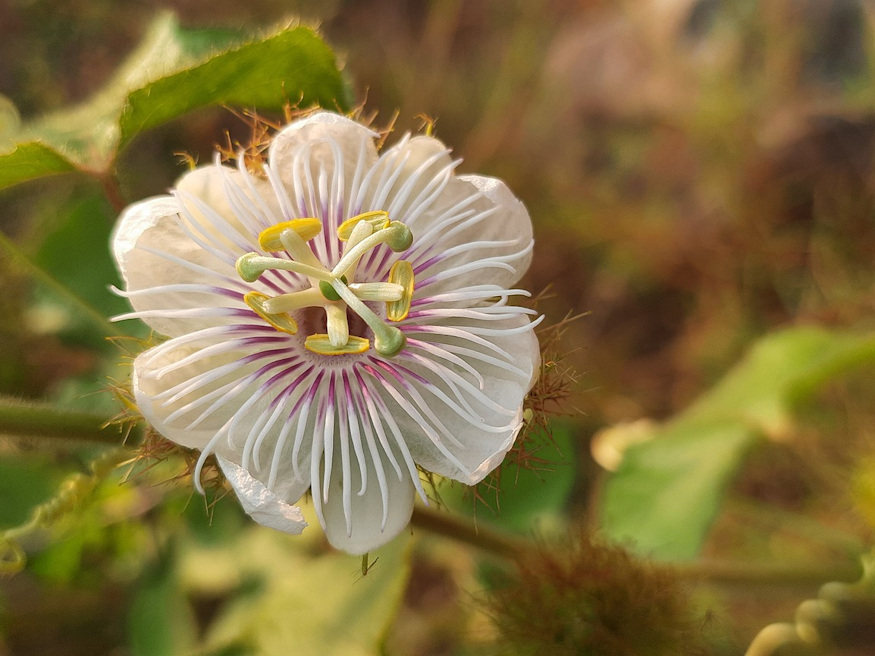
Fruits
Passionflower produces edible fruits that are usually egg-shaped or round and range in color from yellow to orange to dark purple. They are filled with small black seeds that are often used to propagate the plant.

Not all passionflower plants produce fruit, but many do. To determine whether your passionflower plant will produce fruit or just flowers, you’ll need to identify the species of plant you have.
Passionflower plants are classified into two main categories: ornamental and fruiting. Ornamental passionflower plants are grown primarily for their beautiful flowers, while fruiting passionflower plants are grown for their edible fruit.
If you purchased your passionflower plant from a nursery or garden center, the label or the staff should be able to tell you whether it’s a fruiting or ornamental variety. If you’re not sure what type of passionflower you have, you can look up photos and descriptions of different species online or consult with a horticulturist or expert in your area.
In general, if your passionflower plant is a fruiting variety, it will produce small, egg-shaped fruit that is green when young and turns yellow or orange as it ripens. The fruit is edible, and can be used to make jams, jellies, and other sweet treats.
Keep in mind that passionflower plants can take a few years to mature and start producing fruit, so be patient and enjoy the beautiful flowers in the meantime!
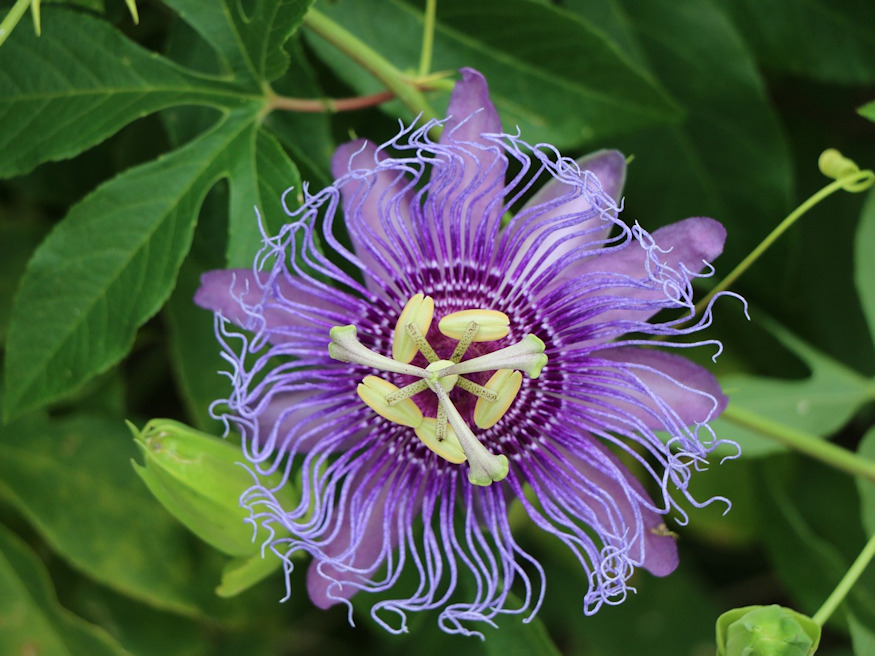
Care
Passionflowers are versatile plants that can thrive in a range of conditions, but they do have specific requirements for optimal growth and flowering. Here are some tips on how to care for passionflowers in your garden:
Sunlight
Passionflowers need full sun to grow and bloom well. Choose a location in your garden that receives at least six hours of direct sunlight per day.
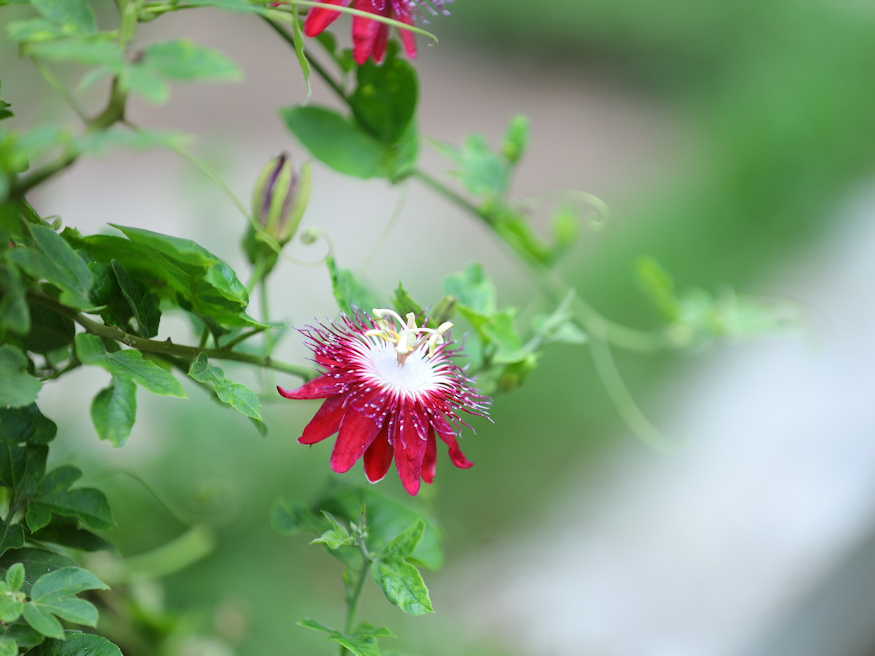
Soil
Passionflowers prefer well-draining soil that is slightly acidic and is rich in organic matter. They don’t like soggy or waterlogged soil, so make sure the soil is loose and crumbly. If your soil is heavy or clay-like, consider adding compost or sand to improve drainage.
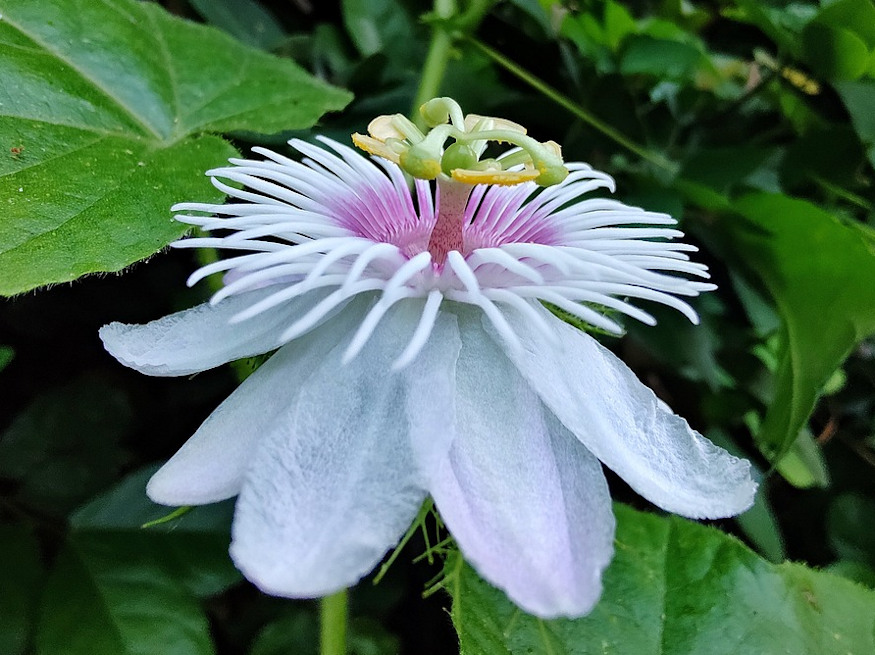
Watering
Passionflower prefers moist soil but can tolerate some dryness. The plant needs regular watering, especially during dry periods but do not let the soil become waterlogged. Water deeply, but don’t overwater as this can lead to root rot.
Fertilizing
Passionflower benefits from regular fertilization during the growing season. Use a balanced fertilizer with equal amounts of nitrogen, phosphorus and potassium, and apply it every two weeks.
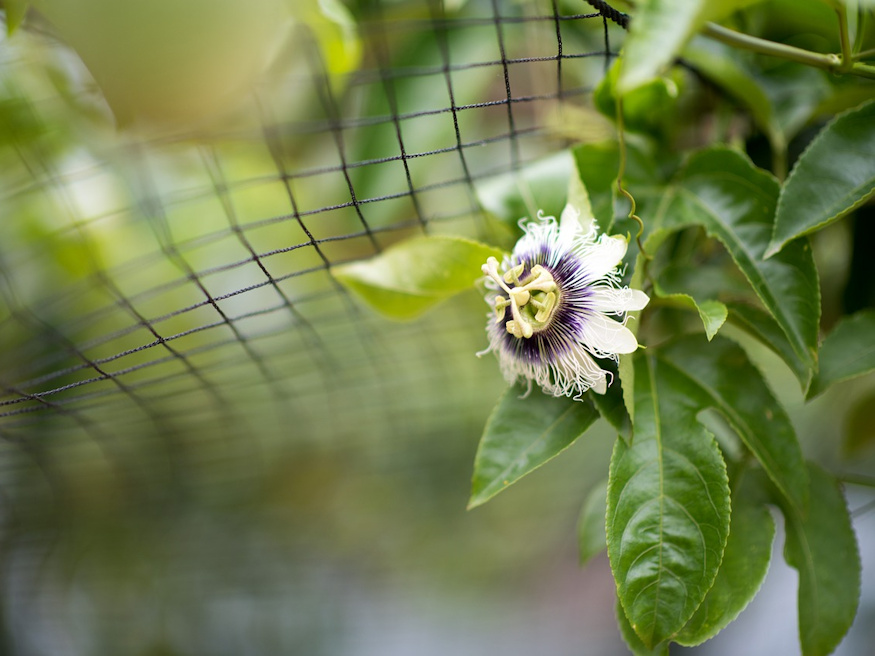
Pruning
Passionflowers benefit from regular pruning to control their growth and shape. Prune in early spring before new growth begins, removing any dead, damaged or diseased branches. You can also prune back the vine to control its size and encourage more flowers.
Pests and diseases
Passionflower is generally resistant to pests and diseases but can be affected by spider mites, aphids and whiteflies. Use a mild insecticide if necessary and remove any infected leaves or branches.
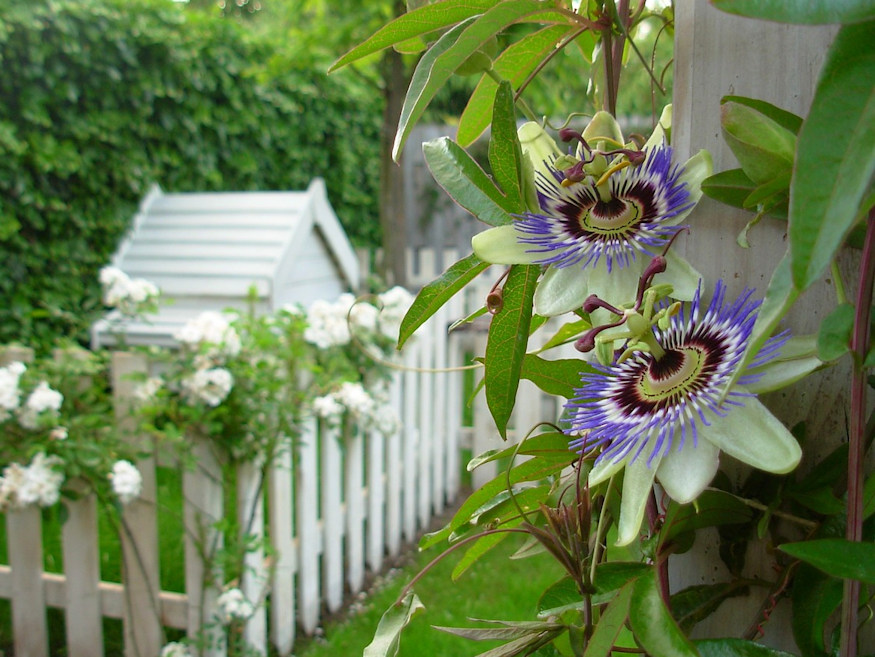
Support
Passionflowers are climbing plants that need support to grow and spread. You can use a trellis, an arbor or a pergola to support your passionflower vine. Choose a sturdy structure that can withstand the weight of the vine and its flowers. You can also use a fence, wall or other structure that can handle the weight of the plant.
Overall, passionflower is a beautiful and easy-to-grow plant that can add a touch of tropical beauty to any garden. With regular care and maintenance, it will thrive and provide you with stunning blooms.



